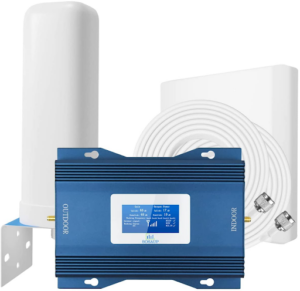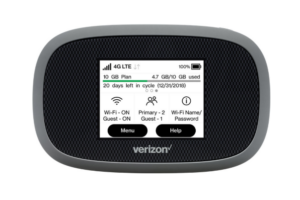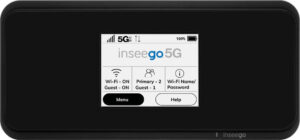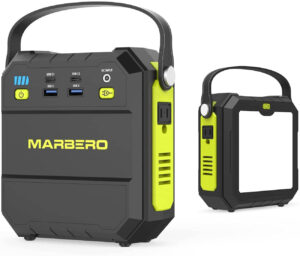By going the rural digital-nomad route over urban digital-nomad you’ll need to live without some modern conveniences, but the good might still outweigh the bad. We’ve got some suggestions to help make the biggest tradeoff about rural nomadism more doable.
Cell phone carriers with rural coverage
Every cell phone carrier will feel hit-or-miss depending on where you end up in the country, but Verizon statistically offers your best chance for a cell signal. Verizon covers 70% of the country with its 4G LTE coverage, with AT&T at 68% of the country, and finally T-Mobile with 62% of the country. Percentages only tell part of the story, so you’ll want to check out some of the coverage maps below and compare with your travel plans. AT&T coverage map
Designated hotspot devices
Verizon, AT&T, and T-Mobile all make their own hotspot devices that can get you a better internet connection than you can get with a mobile hotspot. Wireless carriers even offer designated hotspot data plans that can provide better internet speeds than you would get with a mobile hotspot. Here’s our picks for the best hotspot data plans from each carrier: **Price only good if you already have a Verizon unlimited plan Verizon Jetpack MiFi 8800L Hotspot This hotspot device costs $199.99 from Verizon and allows up to 15 devices at a time to connect to the WiFi connection. AT&T Netgear Nighthawk M6 We tested the Nighthawk M6 hotspot against a generic Velocity hotspot device and AT&T’s hotspot device nearly tripled the data speeds (128 Mbps vs. 45 Mbps) of the other model. The Nighthawk M6 isn’t cheap at $309.99 on AT&T’s online shop, but the results speak for themselves. Consider different cell phone networks and pick an option that provides the best coverage for where you plan on staying. We’d also recommend using a cell booster to help you get the best possible signal. Happy trails on your journey of rural digital nomadism!





